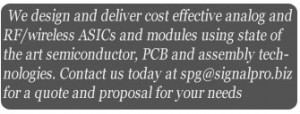The voltage standing wave ratio and the return loss ( and its related quantity, the reflection coefficient)are all related to each other. Once any one of these can be calculated, measured or simulated the others can be derived. These quantities become specially important in the case of matching network design ( as in RF Power amplifiers for example). A brief paper by the technical team at Signal Processing Group Inc., describes this. The paper may be found at
http://www.signalpro.biz > Engineering pages by interested readers.


